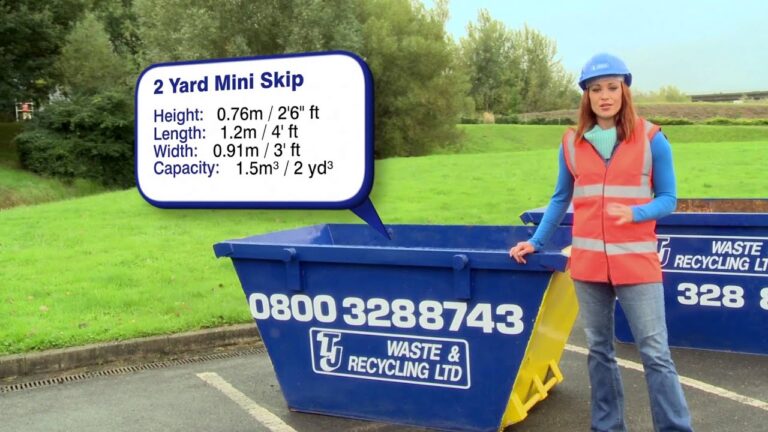
Effective waste management requires knowing how much rubbish is produced and choosing the right skip yard for disposal. This is a thorough guide to selecting the best skip yard and estimating waste volume for efficient management of waste. Throughout the restoration procedure, there was more than enough room within the 2 cubic yard skip to dispose of home garbage.
Volume of Waste to Select Skip Yard
Selecting the appropriate skip size requires you to estimate the quantity of rubbish that you will produce. The following advice will assist you in estimating the amount of waste:
- Calculate the waste material’s volume in kilogrammes or meters.
- For a more precise estimation, divide the things into manageable portions.
- To assist in estimating the quantity of garbage, use internet calculators.
Selecting a Skip Hire Dimension
There are various sizes for skips. Larger skip sizes are more cost-effective as long you’re sure to supply sufficient garbage to fill them. However, having to order an additional skip if the first one you ordered is too small might be inconvenient and costly. This brief guide will assist you with selecting the appropriate skip size by outlining the various sizes obtainable (including dimensions), the kinds of jobs that work well with each size, and the limitations that come with higher skip sizes. See our skip hire information for additional general tips on hiring a skip and our waste-clearing guide for man-and-van garbage removal.
Typical Skip Sizes
Two-Yard Mini Skip
For relatively small works containing a fair amount of debris, the 2 cubic yard or tiny skip was once common (for example, tiling on a bathroom shower). However, the 2-yard skip has become increasingly uncommon because of the growing popularity of man-and-van waste disposal and skip or Hippo bags, which are typically less expensive and easier to use. Any Junk no longer provides this amount of skip as a result.
4-Yard Mid-Swap
With a 4 cubic yard capacity, a midi or tiny skip is ideal for modest kitchen or washroom renovation projects. It can accommodate 25–35 bin bags.
Small Builders Skip with a 6-Yard Length
The most popular skip size is a “6-yarder,” which works well for construction or do-it-yourself tasks like taking out a large washroom or medium-sized kitchen. It’s the size that you typically find on residential streets. It can accommodate 40–55 bin bags.
Large Builders Skip, Eight Yards
The largest skip size available for bulky garbage like concrete, dirt, and rubble is the 8-yard skip, which is also the most popular skip size. Shop refits, office permissions, and residential renovation projects are examples of common usage. It can accommodate between 60 and 75 bin containers. The term “construction workers skip” originated from its widespread use in the industry.
Determine and Sort Waste Types:
Compute Waste Volume
Examine the many kinds of garbage produced first. Sort waste materials into categories such as green waste, building debris, and normal home rubbish. Every category may need a distinct skip quantity and disposal strategy.
Measure Dimensions
Measure the waste material’s length, width, and height to determine if it has a shape that is not rectangular. To find the amount contained in cubic meters or hands and feet, calculate these measurements. The formula for basic forms, such as cubes or rectangles, is length × width × height.
Make Use of Trash Volume Calculators
To determine the approximate amount of particular materials, several web resources and trash quantity calculators have been accessible. To find the approximate volume, enter the details of the measurement and waste type.
Think about Density and Compression
The amount of material can change when some waste products in order such as cardboard plastic and rubber, are crushed. To modify the computed volume appropriately, estimate the compression coefficient ratio or concentration.
Consider Fill Level
Keep in mind to consider the fill level while choosing skip sizes. Skips that are overfilled may become dangerous and incur additional costs. Make sure all rubbish is within the skip’s fill line to prevent issues while it is being picked up.
Final Words
To ensure that the right skip size is chosen for efficient handling of waste, it is essential to calculate the amount of waste accurately. Visit worldmagazines for more interesting articles.